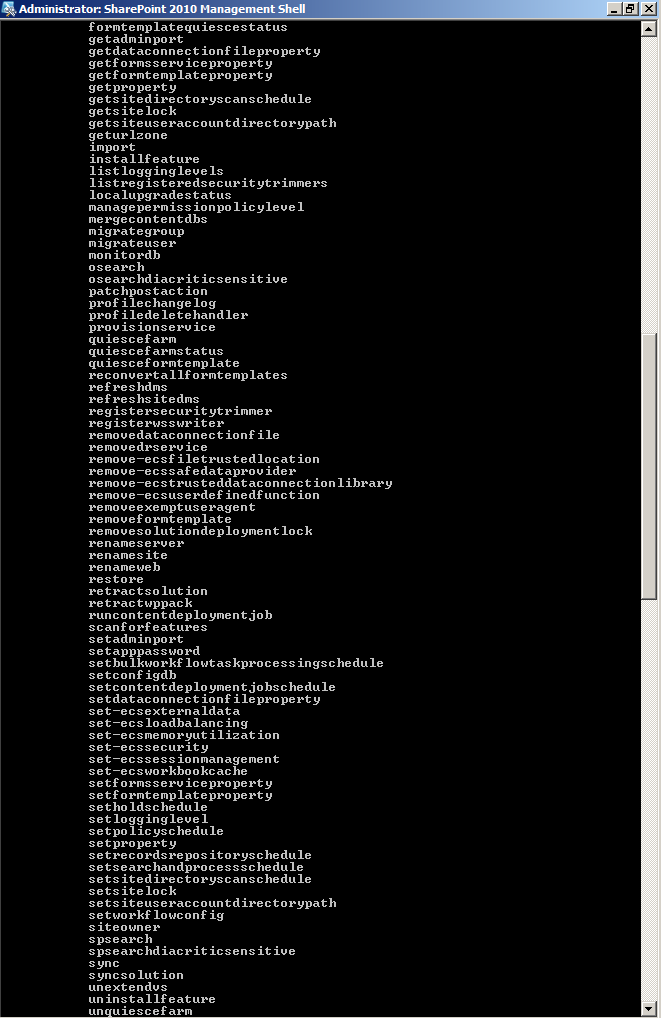 Anyone who has worked on the SharePoint 2007 platform and has come to do some administration tasks, will certainly value the existence of the stsadm tool.
Anyone who has worked on the SharePoint 2007 platform and has come to do some administration tasks, will certainly value the existence of the stsadm tool.
“Stsadm” stands for SharePoint Team Services Administration and is essentially a set of command line commands that enable the administrator to perform sets of administration tasks with as little work and as much safety as possible.
The stsadm has been preserved to the 2010 version of SharePoint but this time, instead of locating and running the file on the server command line (although the file is still there and is possibly still valid to work with it as we used to on the 2007 platform), it is now part of the SharePoint 2010 Management Shell, which is essentially just the Server PowerShell with the SharePoint extensions enabled.
The developer will quickly come to use the stsadm while working with SharePoint, specially if he/she opts to follow the best practices as described in the “Setting up your SharePoint 2010 development environment” by Wrox publishing.
The first command that the developer is proposed to use is this:
stsadm -o setproperty -pn developer-dashboard -pv on-demand
Although it might look a bit daunting at first, in reality, the stsadm, is very simple to translate and remember since it is made up of commands that translate perfectly in simple english. For example, the above command executes the following: stsadm, -o (execute operation) setproperty (the name of the operation), -pn (define the property name) developer-dashboard (the property name) and -pv (give it the property value) on-demand (the property value).
Stsadm is invaluable to all administrators, although Microsoft pushes towards its elimination (there was thoughts about already dropping the tool from the 2010 version) and moving towards administration through the Powershell, or SharePoint Management Shell.
For more information about the stsadm, the Microsoft Technet is always a good place to start.
edit: as I already said before, Microsoft is pushing towards the removal of the stsadm and its substitution by Powershell commands. In fact, all of the stsadm commands have now been included in the Powershell. I will create a post about the SharePoint Management Shell as soon as I have worked with it a bit more but for the time being, an excellent introduction to Powershell for SharePoint has been posted by Gary Lapoint. Just make the jump for more information.
The following is the list of stsadm operations supported by the 2010 version of the tool. I will be using it extensively until I get a grasp of the Powershell. Besides, as Dirk Van den Berghe says, real admins may be using stsadm but, admins from hell use Powershell!



Powered by Zoundry Raven

